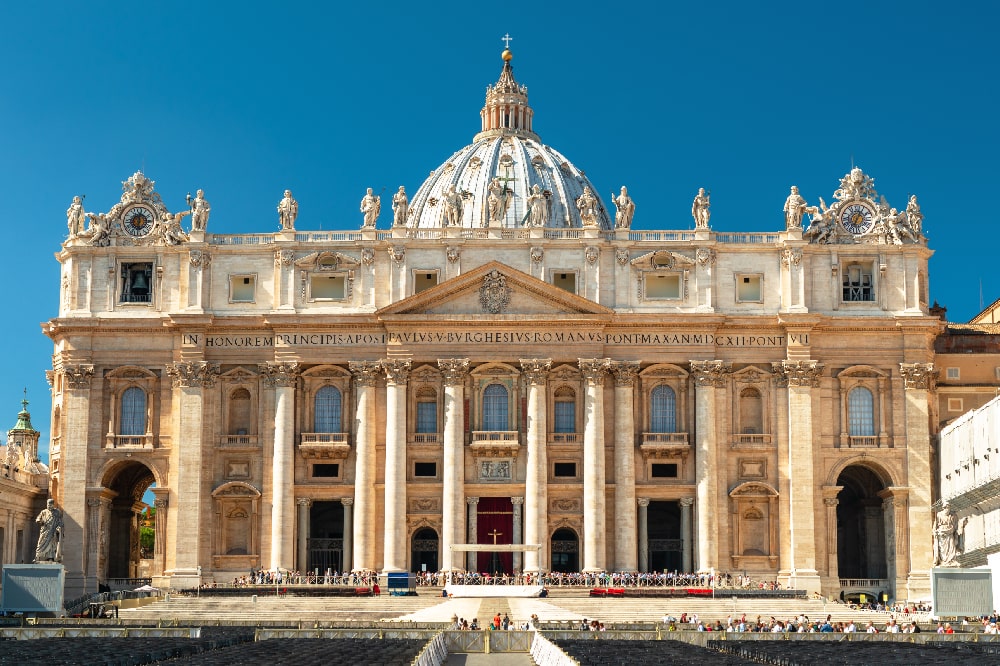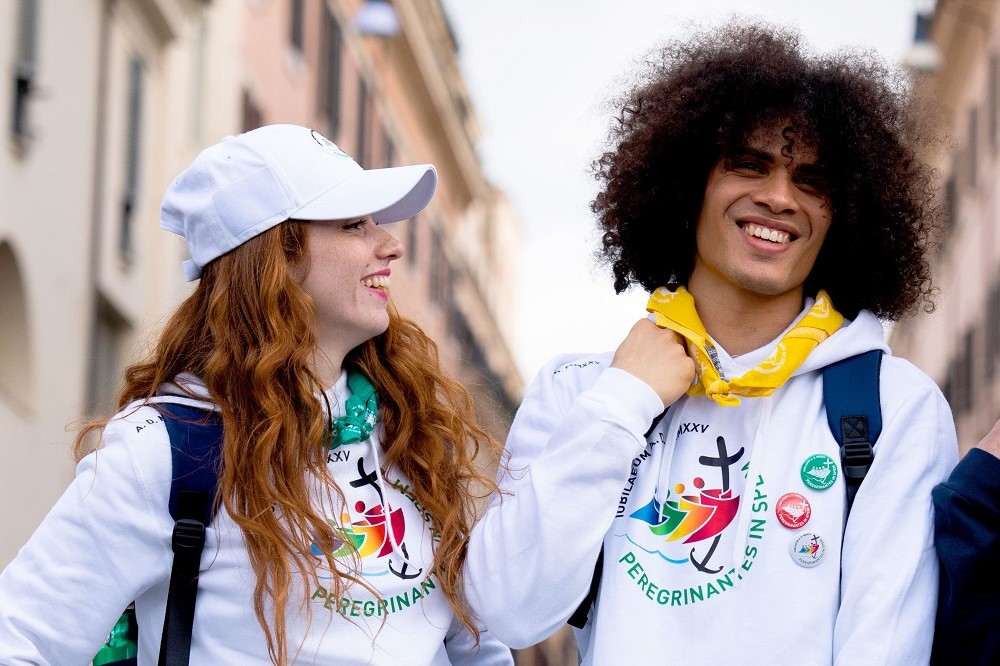Marian Feasts, All the Faces of Devotion to Mary, Mother of Jesus
It is not easy to list all the feasts dedicated to Mary, Mother of Jesus. The devotion shown to her by the faithful has always manifested in various ways within the Catholic Church. The numerous Marian feasts that punctuate the Catholic calendar are moments when devotional acts, prayers, the recitation of the Rosary, and all expressions of faith and affection for the figure of the Mother of God take on a broader dimension that embraces all believers. It is hard to determine whether popular devotion to the Virgin, veneration offered by her humblest children, who have always turned to her, pleading and weeping for the comfort only a mother can provide, or the theology composed on Mary by great scholars and Church Fathers came first. Already in the Gospel of Luke, Mary is identified by the Archangel Gabriel as the “recipient of divine favour and grace” (Luke 1:28), and it is made clear from the outset that “the Lord is with her” (Luke 1:28).

The Catholic Church further ennobled her figure over the centuries, attributing to her the dogmas of the Immaculate Conception, at the centre of controversies for centuries and finally proclaimed by Pope Pius IX in 1854 with the bull Ineffabilis Deus, and the Assumption, already recognized since the 5th century AD in popular devotion and proclaimed in 1950 by Pope Pius XII with the apostolic constitution Munificentissimus Deus. The veneration of Mary, recognized by dogma as the Mother of God since the Council of Ephesus (431 AD) and defined as the mother of the Church in the Second Vatican Council (1962 – 1965), has always been greatly encouraged. Certainly, it has never lost its character of affection and supplication, as no other figure in the history of Christianity has been able to embody mercy and the will to help and protect people, especially in times of greatest difficulty, like Mary, Mother of Jesus and Mother of all humanity.
In the past, we have virtually traveled among the many shrines dedicated to Our Lady in Italy, true beating hearts of this devotion, each with its own characteristics, its own history, and its own modes of worship. We have focused on Marian titles, the many names attributed to the Virgin over the centuries, and we have traced the apparitions of the Virgin around the world, from Loreto to Czestochowa, from Fatima to Lourdes to Guadalupe. As summer progresses and we approach the Feast of the Assumption (15 August) and that of the Coronation of Mary (22 August), we also want to focus on the main Marian Feasts, the special days dedicated to the veneration of the Virgin in the calendar. We have already dedicated an article to the feast of Mary, Mother of the Church, instituted by Pope Francis in 2018. Let’s see which other important Marian feasts and observances there are. Although May is considered the Marian month par excellence, just as October is the month of the Holy Rosary, we will see that the feasts of Our Lady span the entire calendar.

Marian Titles: what are they and how many are all the names dedicated to Mary
Marian Titles: all the appellations with which Mary, mother of Jesus…
Feasts Dedicated to Mary in the Calendar
1 January: Mary, Mother of God
Traditionally, the month of January is dedicated to the Infant Jesus and particularly to the Most Holy Name of Jesus, but on 1 January, Mary Most Holy, Mother of God is celebrated, referring to the Divine Maternity of Mary, connecting to the dogma of Mary Theotokos, Mother of God. This dogma was proclaimed at the Council of Ephesus in 431 AD, during which it was debated whether the Madonna was only Christotokos, Mother of Jesus-Man, or also Theotokos, Mother of God. Initially fixed in October, the celebration of Mary, Mother of God was moved in 1969 to 1 January, a date already celebrated in the past as the Nativity of St. Mary, which later disappeared.

11 February: Our Lady of Lourdes
On 11 February, the anniversary of the first apparition of the Virgin to Bernadette Soubirous, the feast of Our Lady of Lourdes is celebrated. It was on 11 February 1858 that the girl claimed to have encountered, in the grotto of Massabielle, the “lady dressed in white,” destined to give rise to one of the most famous and heartfelt Marian devotions in the world and to transform that grotto into one of the main pilgrimage sites for Catholics.

25 March: Annunciation of the Lord
On 25 March, the Annunciation of the Lord is celebrated. Celebrated by both the Catholic Church and the Orthodox Church, it is one of the Feasts of the Lord and thus dedicated to Jesus, but equally to His mother Mary. It commemorates the encounter between Mary and the Archangel Gabriel when the angel announced to the Virgin the coming of the Messiah and she accepted the role that God had chosen for her in the events to come.
13 May: Our Lady of Fatima
Like the feast of Our Lady of Lourdes, that of Our Lady of Fatima commemorates the first apparition of the latter, which took place on 13 May 1917. This time, the miraculous encounter involved three shepherd children from Aljustrel. Subsequent encounters occurred on the 13th of each month, and after various vicissitudes, the cult of Our Lady of Fatima was recognized and legitimized by the Church in 1930. To the three shepherd children, the Madonna revealed the so-called three secrets of Fatima, and generally conveyed a message of peace and a call to prayer.

Our Lady of Fatima: Penance and prayer are salvation
On 13 May we celebrate the Madonna of Fatima. Her invitation to penance and prayer as instruments of salvation today…
20 May: Mary Most Holy Mater Domini
The Patronal Feast of the Virgin Mary Most Holy Mater Domini is one of the most important events in the city of Laterza, in the province of Taranto. On 20 May, the statue of the Virgin Mary Most Holy Mater Domini, Mary Mother of God, kept in the Sanctuary of Laterza, is carried in procession to the Mother Church of St. Lawrence. This ancient patronal feast is very dear to the inhabitants of Laterza, but also attracts pilgrims and curious visitors from Campania, Basilicata, and Lazio. The procession, named Peregrinatio Mariae, was first instituted in 1985.
31 May: Visitation of the Blessed Virgin Mary
The liturgical feast of the Visitation of the Blessed Virgin Mary is celebrated on 31 May and commemorates the meeting between Elizabeth and the Virgin Mary as narrated in the Gospel of Luke. Mary had just received the Annunciation from the Archangel Gabriel and went to Judea to visit her relative Elizabeth, who had conceived in her old age. When Elizabeth saw her, the child in her womb, who would become John the Baptist, leaped, and Elizabeth greeted Mary as the future mother of the Saviour. On that occasion, the Madonna also expressed her gratitude to God with the canticle contained in the first chapter of the Gospel according to Luke, known as the Magnificat.

Monday after Pentecost: Mary, Mother of the Church
The Marian title of Mary, Mother of the Church, Mater Ecclesiae, was long debated, but only in March 2018 did Pope Francis decree the obligatory celebration of the liturgical memorial of Mary, Mother of the Church on the Monday after Pentecost. This feast celebrates Mary’s dual role as Mother of God and Mother of the Church.

Pentecost: the day when we celebrate the Holy Spirit and the birth of the Church
Pentecost is perhaps, after Easter, one of the most important festivities…
Saturday after the Sacred Heart of Jesus: Immaculate Heart of Mary
The observance of the Immaculate Heart of Mary varies each year but always falls the day after the celebration of the Sacred Heart of Jesus. The feast is recent, as it was Pope Pius XII who consecrated the world to the Immaculate Heart of Mary in 1942, following the celebrations in honour of the Apparitions of Fatima, and two years later, in 1944, instituted the feast of the Immaculate Heart of Mary.

16 July: Our Lady of Mount Carmel
On 16 July, the apparition of the Mother of Jesus on Mount Carmel to Simon Stock, then prior general of the Carmelites, is celebrated. It was 16 July 1251 when the Virgin appeared to the man, handing him a scapular and promising that anyone who died wearing it would be saved. This episode gave rise to the feast of Our Lady of Mount Carmel, and the scapular remains today for the Carmelites the symbol of Mary’s maternal protection.
5 August: Dedication of the Basilica of St. Mary Major
On 5 August 352 AD, the Madonna appeared to Pope Liberius and instructed him to build a church at the point where the following morning he would find snow. Thus, after a miraculous snowfall in August, the Basilica of St. Mary Major was born, one of the four papal basilicas of Rome, located on the Esquiline Hill. It is also the oldest Marian shrine in the West, dedicated to Mary, Mother of God.
15 August: Assumption of Mary
15 August is the day of the Assumption of Mary into Heaven. Although the dogma of the Assumption, according to which Mary ascended to heaven body and soul, was proclaimed only by Pope Pius XII, thanks to papal infallibility, it has very ancient origins and has always been linked to popular tradition. It is a solemnity celebrated by all Christian Churches.

22 August: Mary Queen
Initially instituted on 31 May 1954 by Pius XII, the feast of the Queenship of Mary was later moved to 22 August, the octave day of the Assumption, as a recognition and consecration of the Virgin’s royal dignity. The foundation of such royal dignity of Mary has ancient origins, found in both liturgical texts and popular tradition.
8 September: Nativity of the Blessed Virgin Mary
On 8 September, both the Catholic Church and the Orthodox Church celebrate the Nativity of the Blessed Virgin Mary. Mary’s parents were Joachim and Anne, and the tradition that places Mary’s birth on 8 September is linked to the construction of the Basilica of St. Anne in Jerusalem in the 4th century AD. This basilica was built on the site where the house of Mary’s parents once stood, where the Mother of Jesus is believed to have been born. In the agricultural world, the celebration of Mary’s birth coincides with the harvest time and the end of summer.

The Nativity of Mary, when and why is it celebrated?
8 September is the birthday of Mary, the mother par excellence, the woman who changed the history of the Church and humanity…
12 September: Holy Name of Mary
Since the 12th century, there has been a strong devotion to the name of Mary, fostered by many popes who made it the focal point of various indulgences. An initial official feast was instituted but for some time remained confined to Spain. It was Pope Innocent XI Odescalchi who, in 1685, established the date of the Feast of the Holy Name of Mary on 12 September to commemorate the liberation of Vienna from the Turkish siege (12 September 1683). Pope John Paul II confirmed the feast as an optional memorial on 12 September.
15 September: Our Lady of Sorrows
On 15 September, the day after the celebration of the Exaltation of the Cross, the feast of Our Lady of Sorrows, Mater Dolorosa, is observed. Pope Pius X (1904-1914) established this date, recognising an ancient devotion dating back to the late 11th century, that of Our Lady of Sorrows and her Seven Sorrows. The sorrows of Mary are linked to various moments of her life recounted in the Gospels or passed down through popular devotion, associated with the Passion and death of Jesus, but not only. The sorrows of Mary were represented even then by swords piercing her heart.

7 October: Our Lady of the Rosary
To celebrate the victory against the Turks at Lepanto on 7 October 1571, Pope Pius V instituted the feast of Our Lady of Victory, which his successor, Gregory XIII, renamed the Feast of Our Lady of the Rosary. According to legend, the pope, after recommending that all Christian forces recite the Rosary before the battle, was so confident in the intercession of the Madonna invoked through the Rosary to determine the outcome of the battle that he ordered the bells to be rung in victory even before it ended, so that all the way to Rome it was known that the Christians had won.
21 November: Presentation of Mary at the Temple
On 21 November, the Presentation of the Blessed Virgin Mary is celebrated, a devotional liturgical memorial that commemorates the presentation of Mary to the priests of the Temple in Jerusalem by her parents, Anne and Joachim. On the same day in 543, the Basilica of Saint Mary New in Jerusalem was consecrated.
8 December: Immaculate Conception
Devotion to the Immaculate Madonna is one of the most widespread and beloved in popular tradition. It stems from the dogma of the Catholic Church that Mary, although conceived and born of mortal parents, was born pure, never touched by original sin, unlike all other men and women. Mary is said to be the only creature granted this special privilege in view of her mission to become the Mother of Jesus. On 8 December 1857, Pope Pius IX recognised the dogma and defined the modes of celebration. He blessed a monument in Rome located in Piazza Mignanelli, near the Spanish Steps, dedicated to the Immaculate Mary, and honoured it with a floral offering. Since then, it has been a tradition that on 8 December, the Pope leaves the Vatican to go personally to the Spanish Steps, to bring fresh flowers as an offering to the Immaculate Madonna and lead popular prayer with a reading from the Holy Scriptures and a passage from Church Doctrine.

Immaculate Virgin Mary as a symbol of the Redemption
The immaculate Mary is a definition of the Virgin Mary that highlights her lack of original sin from birth…
10 December: Our Lady of Loreto
On 10 December, the liturgical feast of Our Lady of Loreto is celebrated, which has ancient origins. For centuries, this feast has been marked by the lighting of fires that illuminate the night, recalling those that lit the way for the angels intent on transporting the Holy House of Mary from Nazareth to Loreto.

12 December: Our Lady of Guadalupe
On 12 December, the feast of Our Lady of Guadalupe, protector of all Spanish-speaking peoples and patroness of the Americas, is celebrated. According to tradition, between 9 and 12 December 1531, the Madonna appeared to Juan Diego Cuauhtlatoatzin, one of the first Aztecs converted to Christianity, on the hill of Tepeyac north of Mexico City. Thus began the cult of Our Lady of Guadalupe, whose Sanctuary, built on the site of the apparitions, is one of the most visited places of worship in the world, even more so than Lourdes and Fatima, and the foremost in the Americas.


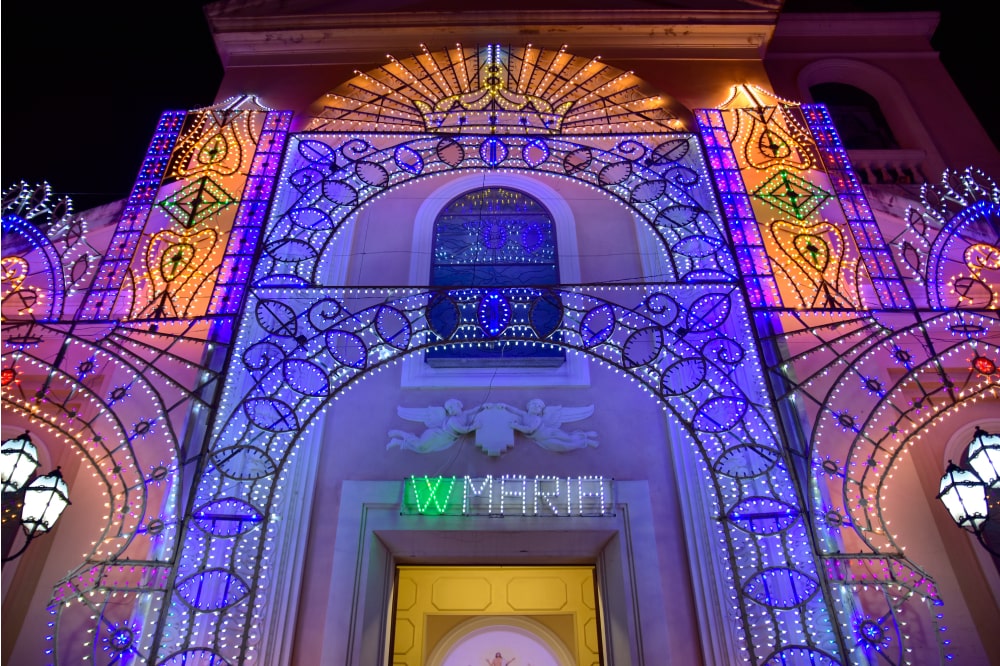
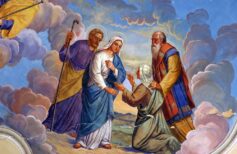

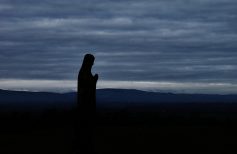
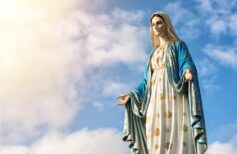

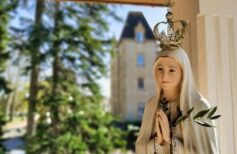
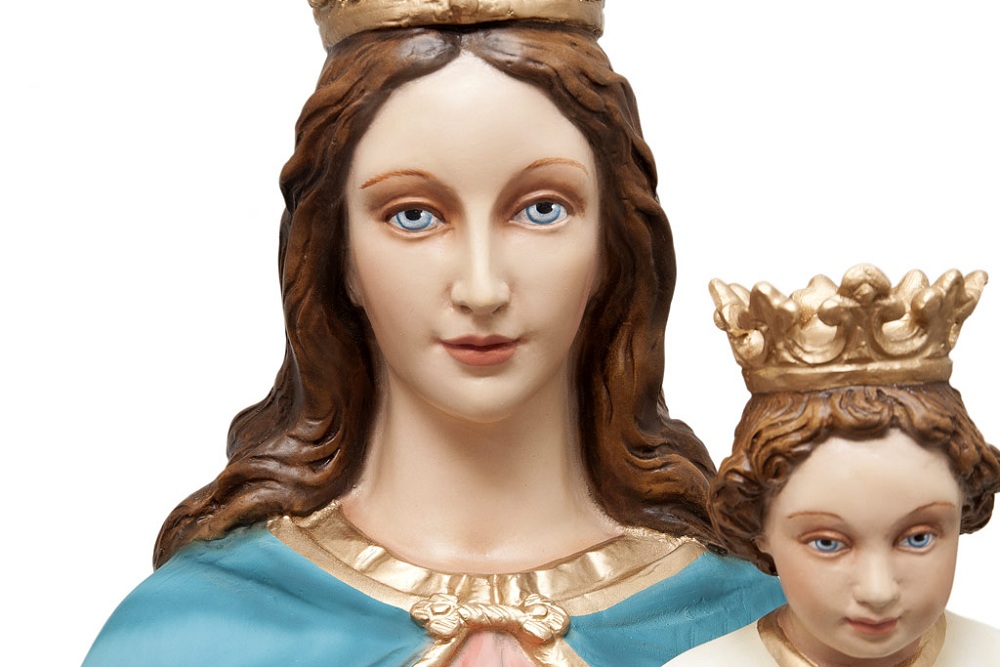
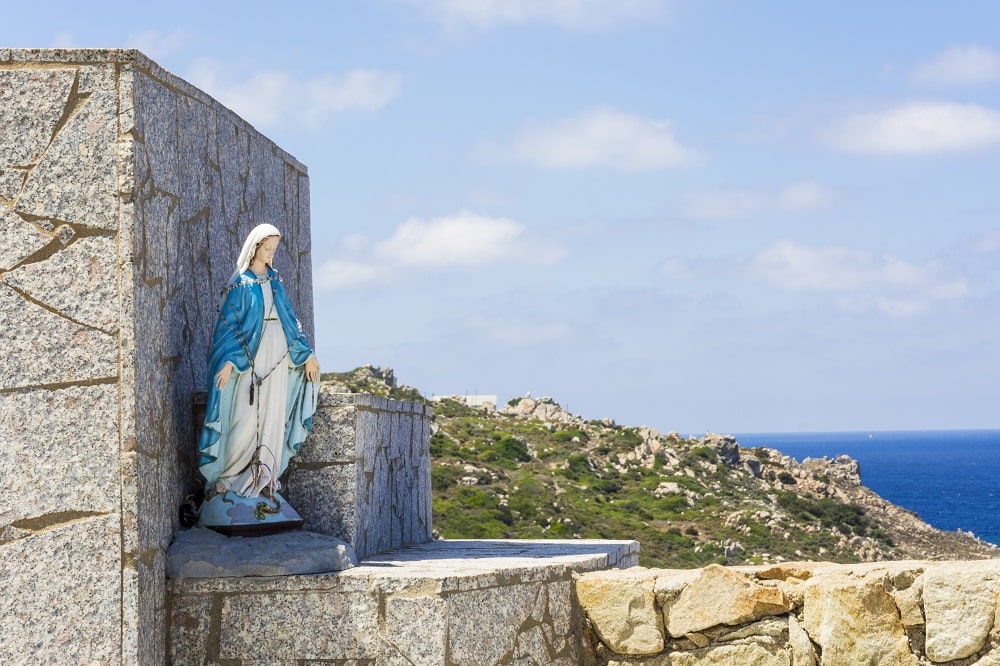
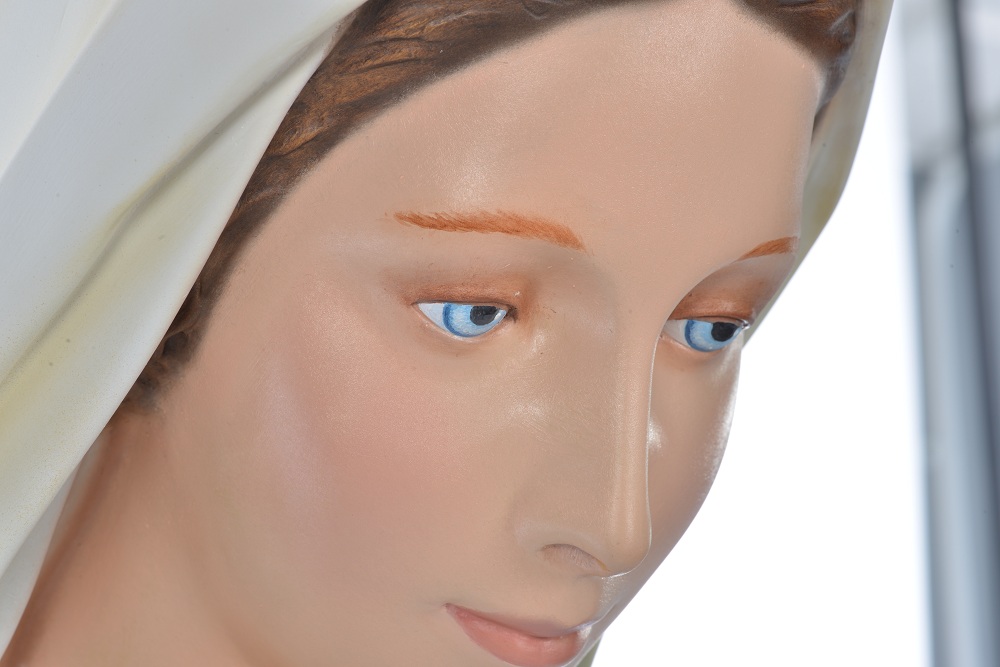








 25 August 2025
25 August 2025

